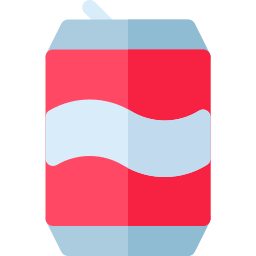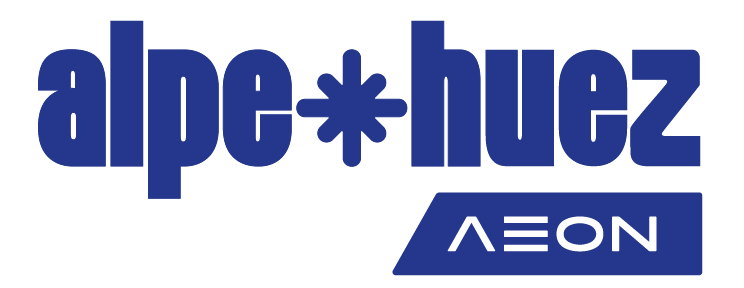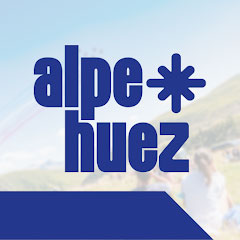Our areas of environmental action
ANIMAL AND PLANT WILDLIFE, SOIL
LANDSCAPING
WASTE
AIR
NOISE
ENERGY
WATER
Sustainable development in practice: what have we achieved?
- PROTECTION OF PLANT AND ANIMAL SPECIES
- PRESERVATION OF SENSITIVE, WET AREAS
- MAINTENANCE OF PLANT COVER
- LANDSCAPING
- SELECTIVE SORTING OF WASTE
- AIR POLLUTION
- NOISE POLLUTION
- CARBON FOOTPRINT
- ENERGY CONSUMPTION
- SNOW PRODUCTION
We implement various actions to preserve the natural environment the resort. From protecting pastures to creating greenhouses, the goal is to promote biodiversity.
Alpe d’Huez currently counts more than 1,528 wildlife species, some of which are protected to prevent them from becoming extinct:
- Apollo butterfly: lives at high altitudes, feeds mainly on sedums and sempervivums. Measures approximately 35-40mm.
- Drosera: insectivorous plant, originally from Australia. Three 3 species are found in Europe; this one grows in wet areas, such as the Rif-Nel peat bog.
The resort has created floral greenhouses at altitudes of more than 1,500m. Once the plantations are in bloom, 2,000 perennials and 12,000 annual plants are maintained and distributed throughout the ski area and the resort.
No pesticides are used for their care. Alpe d’Huez uses hoeing, brushing, sweeping and even insects to care for its plants. For our 50-year old forests, we work with ONF, France’s forestry agency, and RTM, which is specialised in the restoration of mountain areas.
Did you know?
The agricultural practice of grazing is necessary to ecological continuity. In summer, the ski area is home to approximately 2,000 sheep and 280 cattle, which are managed by two shepherds. The pasture areas are protected to prevent disturbance by tourism activities. They are identified in the resort and protected by AFPA (pasture land association).
Sensitive, wet areas play an essential role in the ecology of mountain regions. Alpe d’Huez is therefore committed to their protection by classifying them and applying APPB regulations.
These areas act as “buffers”. They retain the water that infiltrates the soil and limit droughts. The water table is thus supplied with water, enabling storage of this precious resource and protecting against the flood risk. Biodiversity develops in and around these areas, which are protected by the strict measures imposed by regional decrees.
Our undertakings include:
- Not to perform development work, create ski slopes or paths around these areas
- Not to interfere with the water regime
- Not to organise sporting or cultural events
- Not to start fires
- Not to allow tourists to camp within the perimeter of these areas
Did you know?
The sensitive areas (ZNIEFF) are classified according to their size, scope, species and ecological potential. The areas identified in Alpe d’Huez are as follows:
- 3 type I areas: les Grenouilles, les Cavalles, Roche-Noire plateau
- 2 type II areas: les Adrets de la Romanche, Grandes Rousses massif
There are also 2 biodiversity reservoirs (Sarenne and Grande Sure).
Our development projects are accompanied by a maintenance programme to preserve our natural heritage. Several techniques are applied, depending on the works concerned.
Landscaping and environmental impact studies are performed for all development, ski slope and path projects. Buildable land is also marked out to avoid impacting ecological corridors. Once work begins, certain measures are taken:
- Mowing and planting of trees and flowers
- Reinforcement of banks and stone crushing
- Maintenance of paths and roads
- Systematic replanting of grass and plants after completion of the works, i.e. 800kg seeds suited to our environment, thanks to IRSTEA, and 25 tonnes of compost used
- Protection of wildlife, notably the common frog
- Marking of electric lines and wires
- Suitable equipment (seeding tractor, compost spreader, grooming machines, etc.)
- Certified, biodegradable material
Did you know?
At the end of every season, volunteers equipped with gloves and bags come and collect all the waste that has been discarded. Approximately 35m3 of waste are collected! This operation is called “Resort cleaning”, and anyone can come along and join in!
Our landscaping policy is based on two fundamental points to ensure structures that blend in with the landscape.
INSTALLATION OF LIFTS AND BUILDINGS
To build new ski lift stations and/or constructions, such as the chalets for our ski patrols, we encourage the use of natural materials (wood, local coloured stone, slate coloured paint). The chalets are typical mountain constructions and all new drag lifts and magic carpets at the bottom of the resort are environmentally-friendly and designed to blend in. Furthermore, the electric power lines are installed underground and the area concerned is restored and replanted. As for the centre of the resort, we ensure the harmony of all our constructions and facilities and take into account the protection of animal and plant life. Impact studies are therefore performed systematically before all interventions to limit the damage caused.
DISMANTLING OF PYLONS AND CABLES, OPTIMISATION OF LIFT CAPACITIES
Since 2005, SATA has been taking measures to dismantle old pylons and cables. We have already removed 150km of pylons and 50km of cables.
Did you know?
We have also replaced obsolete lifts with a single, larger system that is more modern and efficient. The other lifts that are no longer used have been dismantled. We have thus optimised our transport capacity and restored a natural, respectful landscape.
Recycling is one of the resort’s priority actions to preserve the natural mountain environment. We apply selective sorting methods to enable waste recycling.
- Packaging and paper
- Glass
- Organic waste
- Non-hazardous waste
- Hazardous waste (oil, old brake parts, soiled cloths, batteries, aerosol cans, varnished or painted wood, paint pots, etc.)
Where is this waste stored?
- Recycling bins throughout the ski area and the resort
- Recycling centre for special and biodegradable waste
- Compost bins to reduce organic waste – the compost is then used as a natural fertiliser by our gardeners. This action saves chemical fertilisers, compost and water, as well as limiting trips to the recycling centre
Did you know?
The PENELOPE workshop collects and sorts various items, proposing them for sale to offer them a second life. We also broadcast messages and organise training courses to raise awareness among our personnel, tourists and residents.
Limiting pollution due to transport is a priority for the resort. We have set up various alternative solutions (shuttles, buses, lifts, awareness actions, etc.)
- Shuttles: a bus route to Bourg d’Oisans for our personnel every day of the week. For other trips, we have two 9-seat mini-buses.
- Vehicles: to encourage group travel. Our vehicle fleet is regularly serviced, maintained and replaced.
- Eco-driver training: proposed to all employees operating grooming machines and motor vehicles in an effort to reduce our carbon footprint. Similarly, we have drawn up a masterplan to optimise the use of our grooming machines. We have also invested in quieter, cleaner snowmobiles.
Did you know?
The town council also operates collective shuttle services within the resort. It has 4 vehicles, one of which is a hybrid. To access the valley, a regular bus service to Grenoble is available to limit traffic. We also encourage cable transport and pedestrian paths for trips within the resort. We thus hope to pedestrianise more of the resort. The town council provides recharging stations for electric vehicles.
Noise pollution is harmful for both humans and animals, having a serious impact on their lifestyles. We have therefore opted for new, cleaner technologies to enable more respectful grooming of the area at the bottom of the slopes.
AN EFFICIENT GROOMING PLAN
We take various steps to respect the quiet areas around residential buildings:
- Grooming machine operating hours
- Snow machine operating hours
- Noise measurements for certain jobs and for the snow production plants at high altitude
Did you know?
We are also making our equipment more modern and more efficient:
- Quieter, cleaner snowmobiles
- Study of the use of hydrogen-powered grooming machines
- Study of the use of hybrid and electric vehicles
- Installation of quieter ski lifts
- Installation of drive stations further away from residential buildings
We need to know the impact of our carbon footprint in order to reduce our energy consumption. Two studies have been conducted.
CARBON FOOTPRINT 2010
This study was carried out by ADEME from 1 January to 31 December 2009. It covered several activities, including office activities, agriculture, residential sector, goods transport, waste, raw material production and capital assets. The study revealed that travel, office activities and the residential sector were the activities that generated the most pollution. The resort therefore decided to implement an energy transition policy to improve the situation. In 2009, the resort as a whole produced 65,000 tonnes of CO2.
CARBON FOOTPRINT 2020
Pending a new study of Alpe d’Huez’s ecological footprint by an expert team, SATA calculated its own carbon footprint 10 years later. We found that most CO2 emissions were related to fossil fuels (82.45%), with diesel for heavy machinery producing the most (68.13%). However, non-fossil energy emitted 17.55% of CO2. In total, the company produced approximately 3,360 tonnes of CO2.
Did you know?
The resort plans to continue to invest in renewable energies in an effort to reduce its energy consumption.
Reducing our energy consumption is a priority. We are concentrating our efforts on consumption.
FUEL CONSUMPTION IN THE SKI AREA
Fuel is one of the main sources of pollution in the ski area. Various procedures are implemented:
- Grooming: full audit of the grooming activity, grooming plan, masterplan and daily monitoring of indicators. We have been supported by expert consultants for the past two years to implement the recommendations resulting from the audit
- Eco-driving: to ensure high quality, environmentally-friendly grooming, we organise eco-driver training courses. Our grooming machines are also equipped with a Snowsat system, which is a tactile satnav that provides essential information about the snow, slopes, dangers, buildings, etc. This tool helps us to optimise grooming times and routes, and to control our ecological impact by limiting snow production. The risk of damaging the ground and consuming excess fuel is also reduced. Our grooming machines also use biodegradable oil to prevent risks related to leaks in the ski area
- Consumption monitoring: we keep track of the fuel consumed by each user and each vehicle. This monitoring has enabled an average reduction of 4% per year for our vehicles and 20% for our caterpillar tracked machinery and snowmobiles
ELECTRICITY CONSUMPTION IN THE SKI AREA
What does this involve?
- Monitoring of the electricity consumed by our ski lifts and snow production plants (4-5% reduction per year)
- Implementation of prevention and awareness measures for personnel
- Lighting detectors
- Energy diagnostics and implementation of recommendations
- Study of a metering system for the oldest lifts
Did you know?
-> We were the first ski area to try an electric, hybrid caterpillar-tracked machine from 2012 to 2014
-> Alpe d’Huez won the SAM Eco-Trophy in 2012 for its grooming practices and caterpillar-tracked machinery
-> SATA was the first ski area operator to work with EDF on energy management. This partnership helped us to reduce our annual overall consumption by approximately 15%
The legend of artificial snow production using chemical substances is OVER! Snow is produced using just air, water and electricity.
We have a hillside storage facility of 15,000m3 and water reservoirs that mean we do not have to draw water from the streams and lakes. There are two types of snow machines in our ski area:
- York 40: these are the first snow cannons that were installed. They use 5,000m3 air, 69m3 water and 620kW electricity to produce 140m3 snow.
- Safyr: these new generation systems are more efficient and enable reduced consumption: 900m3 air, 100m3 water and 110kW electricity to produce 200m3 snow
Snow production is essential to be able to guarantee sufficient snow cover for skiers throughout the season and to ensure the economic viability of the resort until 2050, at least, according to a study by CNRS and Météo France. However, SATA continues to invest in more modern, more efficient technologies and also uses other, more natural methods, such as smoothing the slopes and installing snow barriers to preserve the natural snow cover.
Did you know?
Our water reservoirs are maintained and monitored by indicators and sampling processes all year round. They are filled in autumn to avoid affecting the consumption of our local residents. The water used to produce snow is then returned to the natural environment.
Responsible activities and eco-events
SATA works with the library and the town council to propose a range of natural and cultural activities under our “Nature-Culture partnership”. The goal is to raise awareness of the surrounding environment among people of all ages. This educational initiative helps us to share the importance of preserving our natural heritage, biodiversity and local culture.
See another side of Alpe d'Huez!
The botanical footpath in Alpe d'Huez presents more than 300 plant species, as well as being a perfect opportunity to explore the Sarenne gorges!
In the Alpine garden, at an altitude of 2,700m, you can also admire a number of different plants, which are identified by informative labels. The garden extends towards Lac Blanc, where a guided tour is proposed.
Environmental responsibility also means making little efforts on holiday! Discover our landscapes on foot, on skis or on a bike instead of using a motorised vehicle.
Meeting the locals
Why not find out more about how shepherds or beekeepers live? The library organises a number of events for local farmers and craftsmen to present their professions to the public.
An ideal opportunity to meet the members of Route des Savoirs-Faire association, who organise regular meetings.
Creating responsible souvenirs
Creative workshops are a fun way to raise children’s awareness of the environment.
Several themes are proposed including “Draw your dream garden”, “River pebble decoration”, “Play the transhumance game with your friends". Fun moments for all!
Planting from the seed library!
The seed library is organised in two areas dedicated to vegetable garden plants and local wild plants.
The purpose of this initiative is to encourage people to take the individual envelopes and use them to leave, exchange or gather seeds to be replanted at home or in the wild.
Every little action helps to develop biodiversity in our mountain environment.
Raising awareness by listening and sharing
Environmental consciousness also means education!
Several reading round-tables are organised to introduce children to the marvels of nature.
Around thirty books are proposed on different themes, such as animals, plants, water, the forest, etc.
“Resort cleaning" operation
At the end of every season, the resort invites volunteers to come and collect all the waste that has been discarded throughout the ski area.
An average 35m3 of waste are collected. This is a major contribution to the preservation of our mountain heritage!
So, why not get out your bags and gloves and join in with this environmental mission!
L' Alpe d'Huez is also...
CERTIFICATIONS (ISO)
- Quality………… ISO – 9001 certified since 2001
- Security……….. OHSAS – 18001/ISO – 45001 certified since 2010
- Environment………. ISO – 14001 certified from 2010 to 2018
PARTNER ASSOCIATIONS
- Association Foncière Pastorale Autorisée d’Huez (AFPA)
- Association Mountain Riders
- Association Vacances propres
- Association Citron Vert
- France Nature Environnement (FNE)
- Association Nationale des Maires de Stations de Montagne
SUSTAINABLE COLLABORATIONS
- Alliance dans les Alpes
- Communauté de communes de l’Oisans (CCO)
- Office National des Forêts (ONF)
- Restauration de terrains en montagne
- Forest Stewardship Council (FSC)
- Program for the Endorsement of the Forest (PEFC)
- Imprim’vert
- Ecolabel

DID YOU KNOW?
The time it takes for waste to disappear from the environment depends on its type. It can take just a few days or several thousand years!

A CIGARETTE BUTT
Takes…
730
Days

CHEWING - GUM
Takes…
1825
Days

A DRINK CAN
Takes…
3650
Days

